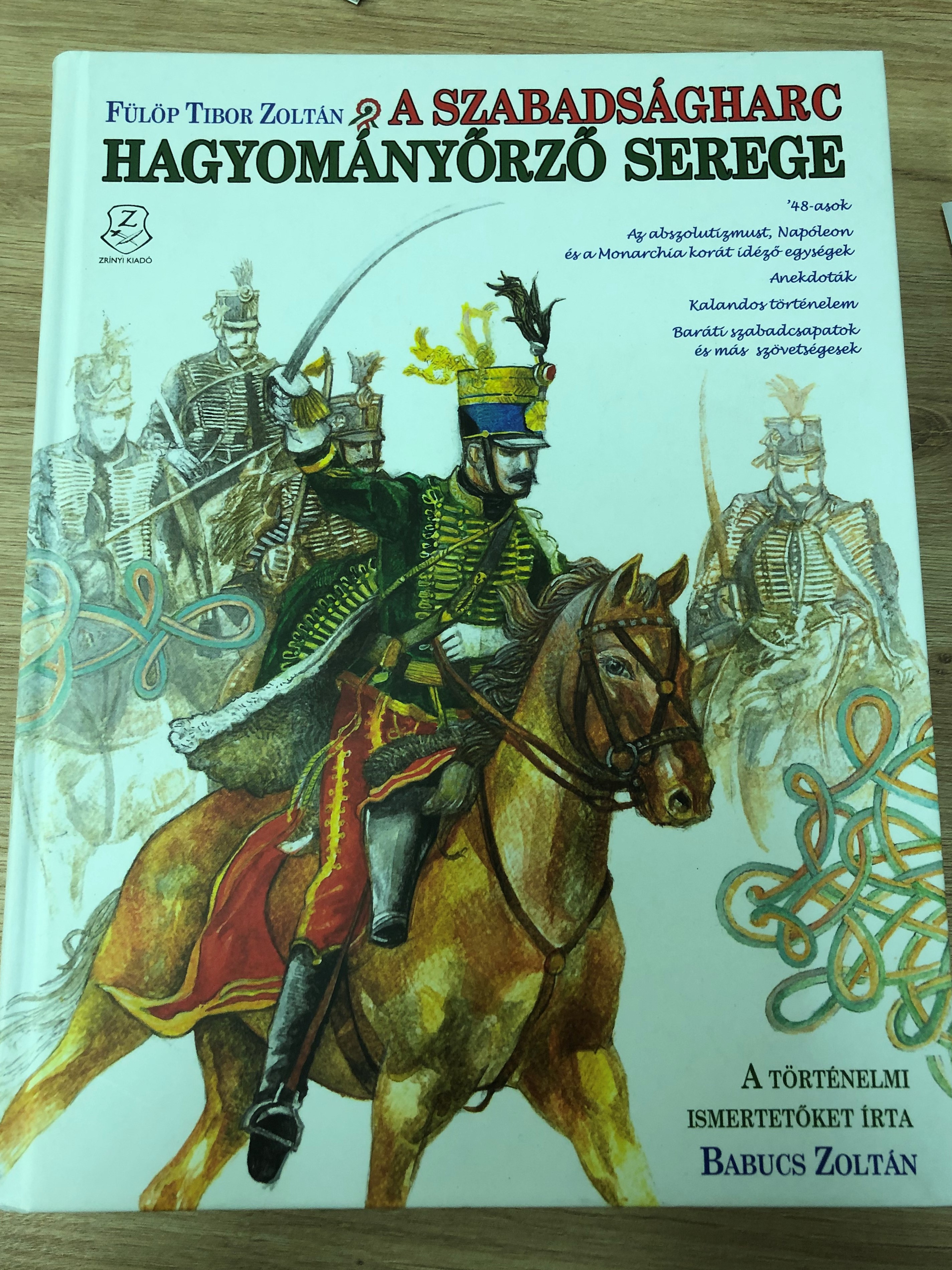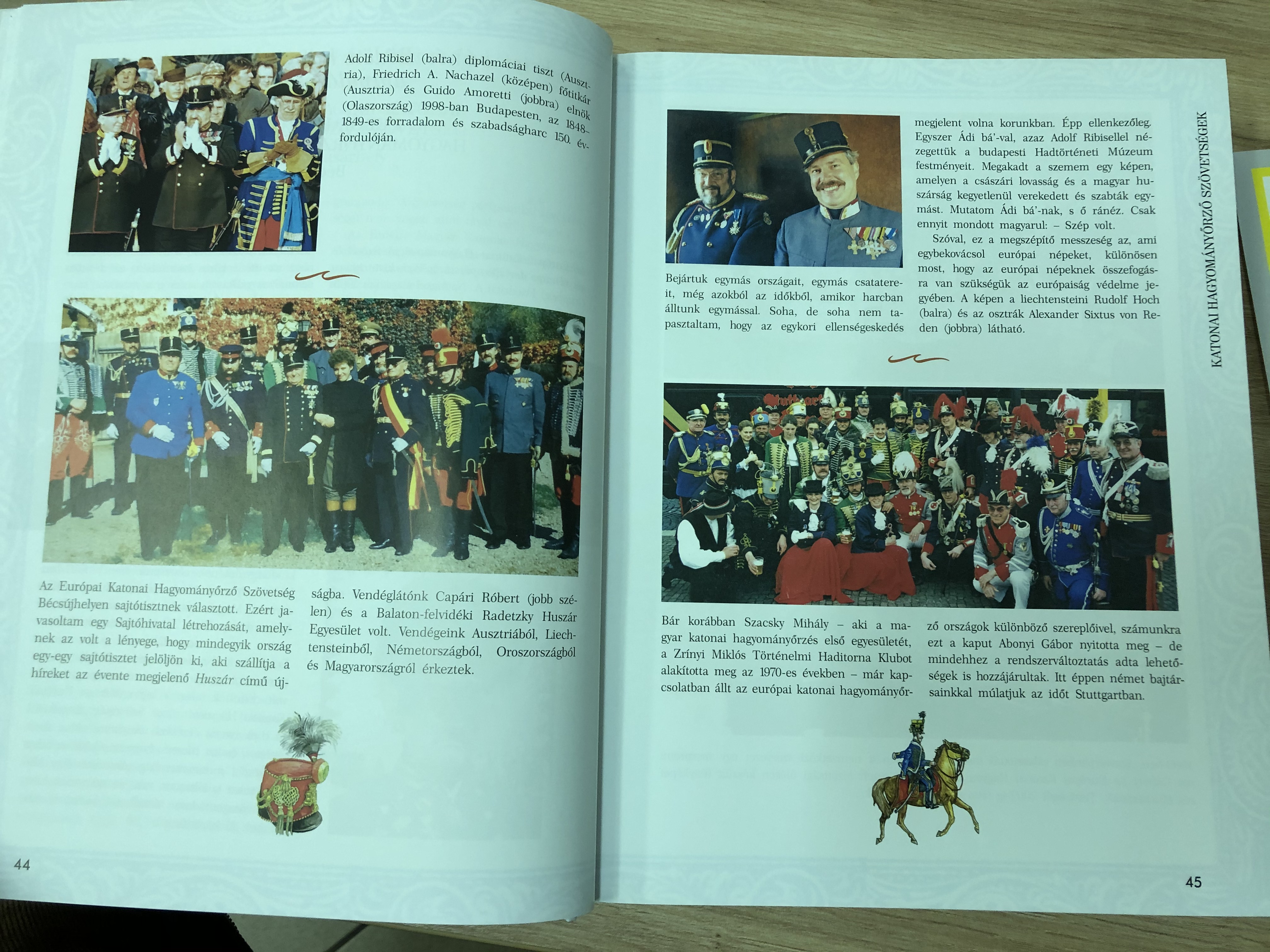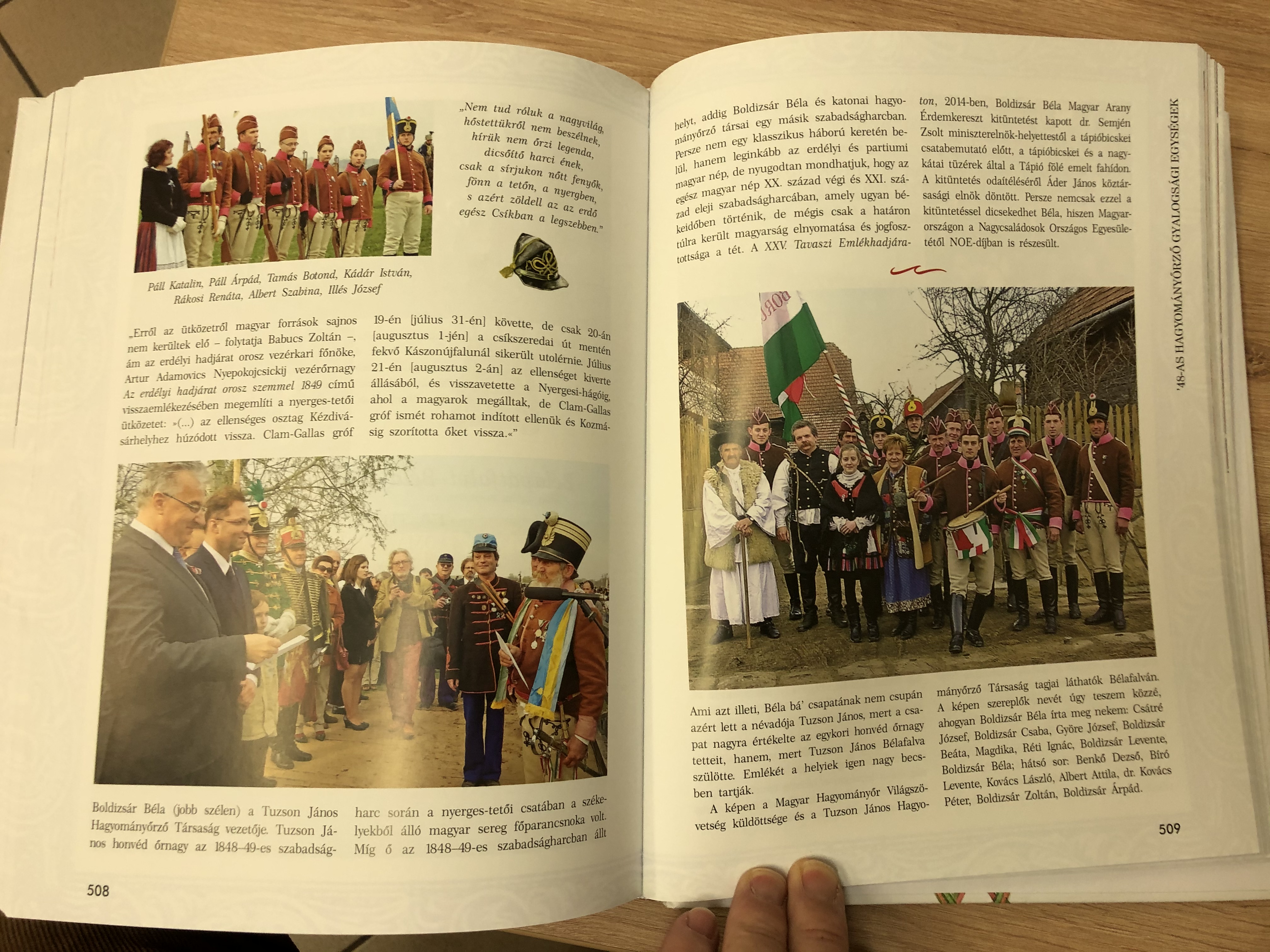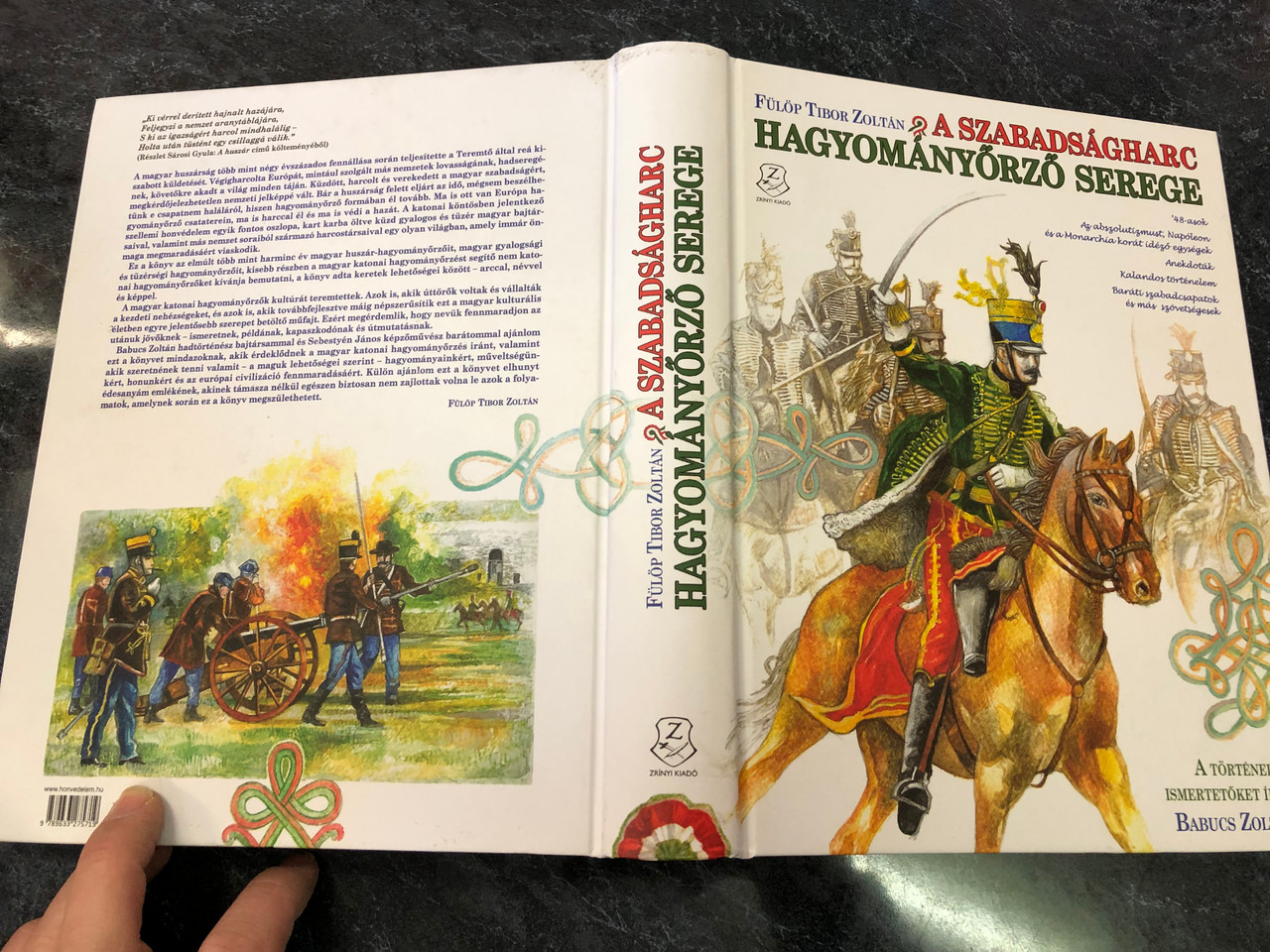Description
A szabadságharc hagyományőrző serege
The Hungarian Freedom Fighters' Traditional Army from the 1848 Revolution
Product Details / Termékadatok
- Format / Formátum: Hardcover / Keménytáblás
- Publication Year / Kiadás éve: 2018
- Pages / Oldalak száma: 596
- ISBN-13: 9789633275719 / 978-9633275719
- ISBN-10: 9633275717
- Publisher / Kiadó: HM Zrínyi Kiadó
- Language / Nyelv: Hungarian / Magyar
Overview / Áttekintés
English:
A szabadságharc hagyományőrző serege (The Hungarian Freedom Fighters’ Traditional Army) by Fülöp Tibor Zoltán is a detailed historical study of the legacy and traditions of the Hungarian revolutionary forces from the 1848–49 War of Independence. This in-depth volume explores the military structure, uniforms, weaponry, and tactics used by the Hungarian honvéd army, providing a comprehensive overview of its historical significance and modern-day commemorations.
The book also features contributions from historian Babucs Zoltán, adding further insights into the symbolism, tradition, and historical memory of the Hungarian military heritage. Richly illustrated and meticulously researched, this book is a valuable resource for history enthusiasts, military historians, and those passionate about Hungary’s struggle for independence.
Hungarian / Magyar:
Fülöp Tibor Zoltán A szabadságharc hagyományőrző serege című műve részletes történelmi tanulmány a magyar szabadságharc haderejének hagyományairól és örökségéről. A könyv átfogóan mutatja be az 1848–49-es forradalom és szabadságharc katonai szervezetét, egyenruháit, fegyverzetét és hadászati stratégiáit, valamint a történelmi események mai emlékezetét és megőrzését.
A kötetben Babucs Zoltán történész közreműködésével mélyebb betekintést nyerhetünk a szabadságharc katonai hagyományainak szimbolikájába és történeti jelentőségébe. A gazdagon illusztrált és gondosan dokumentált kiadvány alapvető olvasmány a magyar történelem, hadtörténet és a honvédség múltja iránt érdeklődők számára.
Product Features / Termékjellemzők
- English: A detailed historical analysis of the Hungarian Revolutionary Army of 1848–49.
- Hungarian / Magyar: Részletes történelmi elemzés az 1848–49-es szabadságharc haderejéről.
- English: Covers military traditions, uniforms, weaponry, and tactics.
- Hungarian / Magyar: Hagyományok, egyenruhák, fegyverek és harcmodor bemutatása.
- English: Features contributions from historian Babucs Zoltán.
- Hungarian / Magyar: Babucs Zoltán történész közreműködésével készült.
- English: Richly illustrated with historical photographs and reconstructions.
- Hungarian / Magyar: Korabeli fotókkal és rekonstrukciókkal gazdagon illusztrált.
Interesting Facts / Érdekes Tények
English:
- The Hungarian Revolution of 1848 was part of a series of European uprisings seeking national independence and democratic reforms.
- The Hungarian army, known as the Honvédség, played a crucial role in the conflict, introducing modern military strategies.
- Many of the traditions and symbols of the 1848 revolution are still honored today in Hungarian military commemorations and reenactments.
Hungarian / Magyar:
- Az 1848-as magyar forradalom és szabadságharc a Európát átszövő nemzeti és demokratikus mozgalmak része volt.
- A magyar honvédség kulcsszerepet játszott a harcokban, és modern hadászati megoldásokat alkalmazott.
- Az 1848-as események hagyományai és jelképei ma is fontos szerepet töltenek be a magyar katonai emlékezetben és hagyományőrző rendezvényeken.
Publisher / Kiadó
English: Published by HM Zrínyi Kiadó in 2018.
Hungarian / Magyar: Kiadó: HM Zrínyi Kiadó, 2018.
Feedback / Vélemények
English: Have you read A szabadságharc hagyományőrző serege? What do you think about the Hungarian Revolution of 1848? Share your thoughts and join the discussion!
Hungarian / Magyar: Olvasta már A szabadságharc hagyományőrző serege című könyvet? Mit gondol az 1848-as forradalom örökségéről? Ossza meg véleményét és csatlakozzon a beszélgetéshez!
Hashtags
English:
#HungarianHistory #1848Revolution #MilitaryTradition #Honvédség #HistoricalResearch #Történelem #FreedomFighters
Hungarian (Címkék):
#MagyarTörténelem #1848Forradalom #Hadörténet #Honvédség #Hagyományőrzés #Szabadságharc














































































